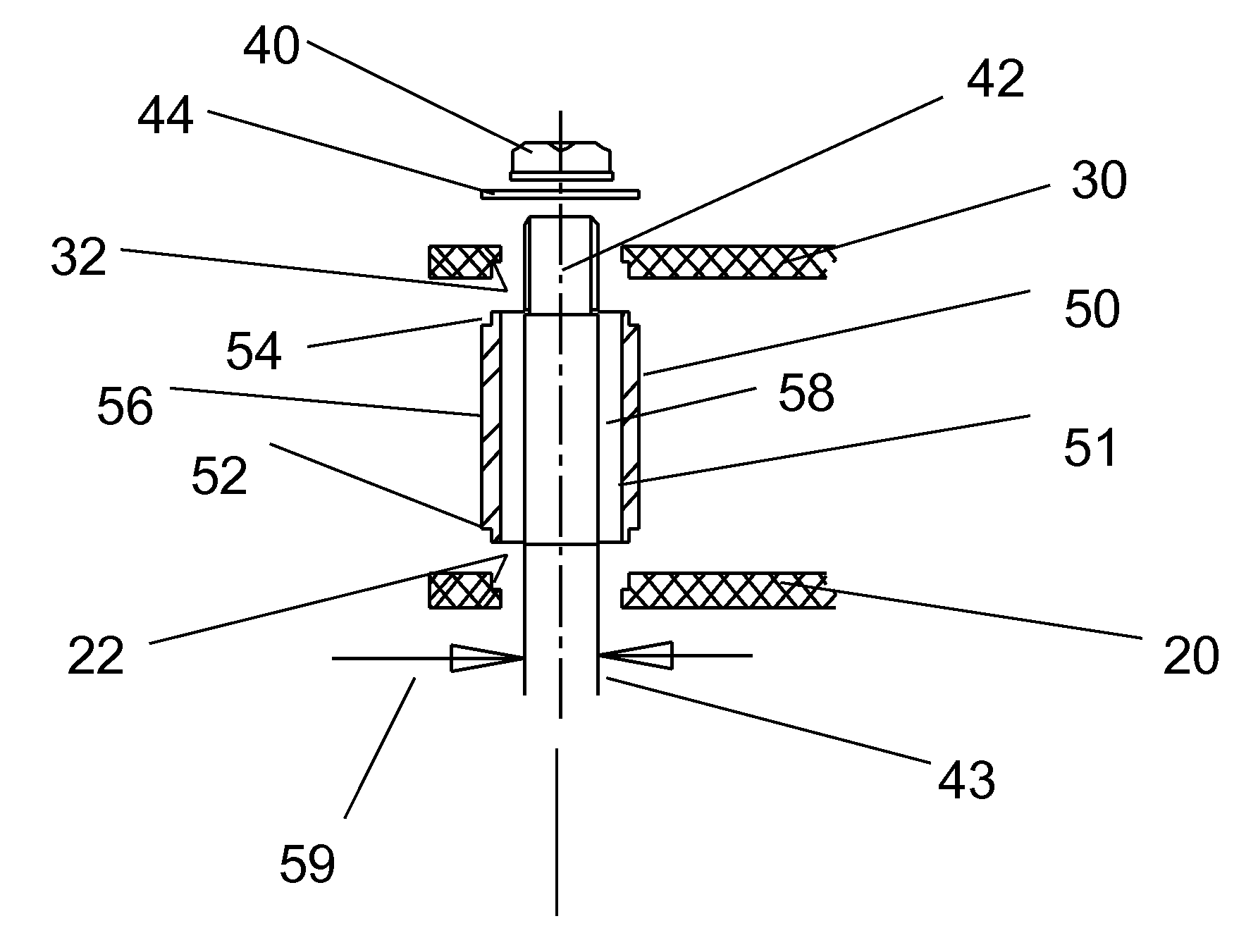Variable geometry vane ring assembly with stepped spacer
a vane ring and variable geometry technology, applied in the direction of liquid fuel engines, machines/engines, reaction engines, etc., can solve the problems of detrimental effect on the components of the turbocharger, aerodynamic inefficiencies, twisting motion, etc., to eliminate the potential for vanes, maintain efficiency, and be cost-effective and reliable
- Summary
- Abstract
- Description
- Claims
- Application Information
AI Technical Summary
Benefits of technology
Problems solved by technology
Method used
Image
Examples
Embodiment Construction
[0050]The invention will now be described by reference to illustrative embodiments. FIG. 18 shows a turbine portion (100) of a turbocharger, in which a plurality of guide vanes (80) are positioned between a lower vane ring (20) (“LVR”) and an upper vane ring (30) (“UVR”). The guide vanes (80) are rotatably movable to control the amount of exhaust flowing into the turbine. The distance between the supporting rings (20), (30) is maintained by a spacer (50) positioned between them. The lower and upper vane rings (20), (30) are connected to the turbine housing (100) by a nut (40) and a metal fastener (42). The metal fastener can take the form of a stud, bolt, or any other metal fastener used in the mechanical arts. A washer (44) can be placed between the nut (40) and the second support ring (30). The washer (44) has a suitable size so that it can minimize surface load of the nut (40) to allow the system to move.
[0051]As can be more clearly seen in the exploded view of FIG. 7, the spacer...
PUM
 Login to View More
Login to View More Abstract
Description
Claims
Application Information
 Login to View More
Login to View More - R&D
- Intellectual Property
- Life Sciences
- Materials
- Tech Scout
- Unparalleled Data Quality
- Higher Quality Content
- 60% Fewer Hallucinations
Browse by: Latest US Patents, China's latest patents, Technical Efficacy Thesaurus, Application Domain, Technology Topic, Popular Technical Reports.
© 2025 PatSnap. All rights reserved.Legal|Privacy policy|Modern Slavery Act Transparency Statement|Sitemap|About US| Contact US: help@patsnap.com



